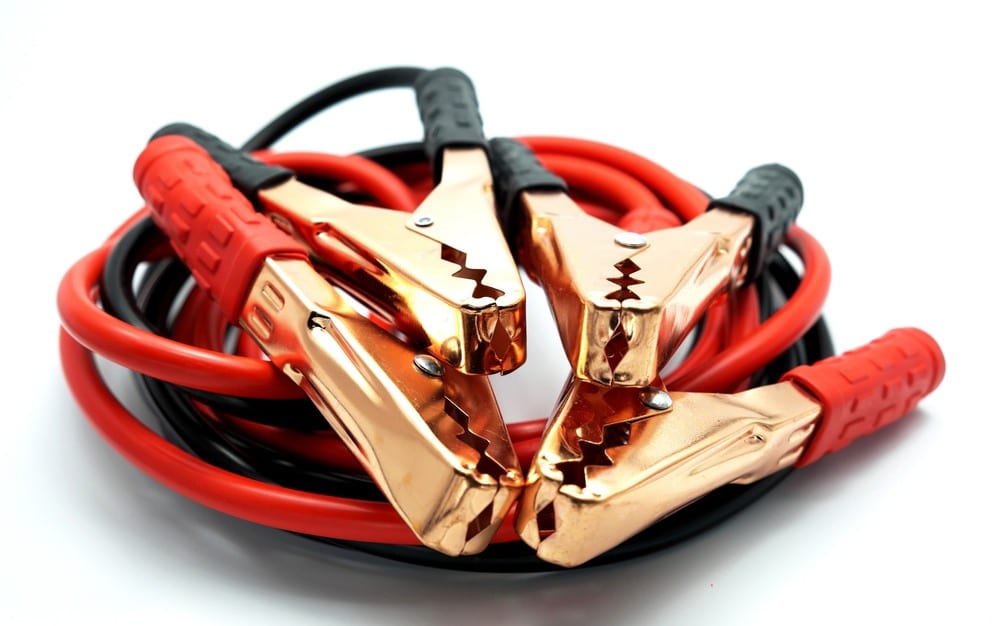One of the easiest ways to get your car started and get on the road once again is to jump start your vehicle using jump leads, and here’s exactly how to do it!
Prevention is the best cure

Keeping on top of vehicle maintenance is essential. There are a number of checks every vehicle owner should carry out every week and they’re so simple, you don’t need any vehicle know-how to complete them! Your tyres, fluid levels, lights and windscreen should all be examined at home, but there’s one more component that needs a weekly check-up to prevent costly problems…
Your vehicle’s battery plays an essential role in the smooth and successful operation of your vehicle. Without a good quality, charged battery, your vehicle and all the electrical components it consists of simply won’t work. But as lockdown has shown, a car battery is a lot less resilient than many think.
If your car has been idle for a long period of time during lockdown, you may just discover that when you come to use your vehicle it won’t start. A dead or flat battery is not only the number 1 cause of breakdown, it’s the primary fault behind a non-starting vehicle.
1. Gather the equipment you need
Jump leads
It’s always a good idea to carry a few emergency vehicle essentials with you, and jump leads certainly fall into this category.
To jump start your car, you’ll need a pair of jump leads. These jump leads should be working and in good condition, and you must not use jump leads that are damaged or that get hot whilst in use. You’ll also need your vehicle with its dead battery and another vehicle with a fully charged battery. This other vehicle should not be a hybrid or electric car as jump starting can cause damage to these particular vehicle types.
Battery booster pack
Alternatively, you can charge a flat battery using a battery booster pack, which is great if you don’t have access to another car for jump starting.
Battery charger
Battery chargers can also be utilised but should be used in accordance with the manufacturer’s instructions to prevent overcharging and damage.
2. Make safety a top priority
As well as checking your jump leads for damage before use, make sure the battery and wider environment is safe. Both batteries should be in good condition, and not damaged or leaking.
You should also wear suitable attire for jump starting. This means no loose clothing, scarves or ties as these could easily get caught up in the moving parts of your engine. You should remove any metal objects from your person and the environment, such as jewellery, watches, tools and loose wires.
Do not smoke or produce any naked flames when the battery is exposed. Batteries contain highly flammable gases which could easily ignite.
3. Get both cars in the right position
Whilst your car isn’t movable, you must ensure that both vehicles (the dead one and the vehicle with the fully charged battery) are correctly lined up.
The cars should be parked with their bonnets facing each other to ensure the leads can reach both batteries easily, but they should not be touching. Once in the optimum position, keep the handbrakes on and the ignitions switched off.
4. Connect the jump leads
Open and securely prop up the bonnets of both vehicles. Underneath the hood you’ll find your battery, and the positive and negative terminals that you will have to attach the leads to should be clearly marked.
Connect your red jump lead to the working battery’s positive terminal, then connect the other end of the red jump lead to the dead battery’s positive terminal. Next connect the black jump lead to the working battery’s negative terminal and attach the other end of the black jump lead to the unpainted metal on the car’s engine block or chassis to earth the connection.
5. Start and run the cars
After a few minutes, start the engine of the working car. Run for one minute before starting the engine of the flat car. You should then let the cars run for roughly 10 minutes before turning both vehicles off and disconnecting the jump leads.
6. Disconnect the jump leads
Disconnect the jump leads in reverse order, i.e. disconnect the black lead from the earthing point, remove the black jump lead from the negative terminal, disconnect the red lead from the flat battery’s positive terminal and finally remove the red jump lead from the working battery’s positive terminal. During disconnection, make sure that the leads do not touch the cars or each other.
7. Start your car and drive it
Now restart your car. If it starts up, you will have to drive your vehicle for at least 30 minutes to achieve full charge.
If your vehicle still doesn’t start
If after jump starting, your vehicle still does not start, a dead battery may not be to blame. There are many reasons why a vehicle does not start, such as a defective ignition switch, faulty starter, clogged fuel filter or empty fuel tank, and you should seek professional help to identify and fix the fault.
At Collison Motoring Services, we’re here for all your vehicle repair and maintenance needs. We also provide a free battery check and report to examine the health of your battery and identify any issues.
Don’t want car battery issues to get you down in the future? We’d recommend a regular service with Collison to improve your vehicle’s reliability and prevent inconvenient, costly problems.
For help with vehicle repair, battery replacement or car servicing, please contact us today.



